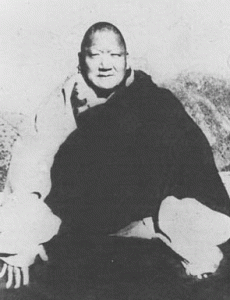The following is respectfully quoted from “The Treasury of Knowledge: Book Six, Part One“ by Jamgön Kongtrul:
Direct Perception of the Sense Organs [1″]
The defining characteristic of the first of these is [bare] consciousness consisting of extraneous awareness, which arises without conceptuality and without bewilderment, directly from the physical sense organs that constitute an individual’s own predominant condition. It has five aspects, corresponding to the direct perception of the [five] sense organs [the eye and so forth] which apprehend their respective sense objects.
Direct Perception of Mental Consciousness [2″]
The defining characteristic of the second is [bare] consciousness consisting of extraneous awareness, which arises without conceptuality and without bewilderment, directly from the sense faculty of the mind that constitutes an individual’s own predominant condition. It too has five aspects, corresponding to the direct perception of the [five aspects of] mind, which apprehend their respective sense objects.
Direct Perception of Intrinsic Awareness [3″]
The defining characteristic of the third is [bare] consciousness transcending all the other aspects of consciousness, which is exclusively introverted (kha nang kho nar ‘phyogs pa’i shes pa).
Direct Perception of Yoga [4″]
The defining characteristic of the fourth is the [bare] consciousness of a sublime being (ārya, ‘phags pa), free from conceptuality and without bewilderment, which derives from the power of genuine meditation (bhāvanā, sgom). When the last of these is analyzed, there are in fact three modes of the direct perception of yoga, corresponding to the [meditations of] the pious attendants, the hermit buddhas (pratyekabuddha, rang rgyal), and the [bodhisattva] followers of the Greater Vehicle–these are exemplified respectively by the path of insight (darśanamārga, mthong lam) attained by the pious attendants, the path of insight attained by the hermit buddhas, [and so forth].












“The defining characteristic of the second is [bare] consciousness consisting of extraneous awareness, which arises without conceptuality and without bewilderment, directly from the sense faculty of the mind that constitutes an individual’s own predominant condition. It too has five aspects, corresponding to the direct perception of the [five aspects of] mind, which apprehend their respective sense objects.”
Are these five aspects of mental consciousness the five consciousnesses mentioned in the Heart Sutra: eye consciousness, ear consciousness, etc.?